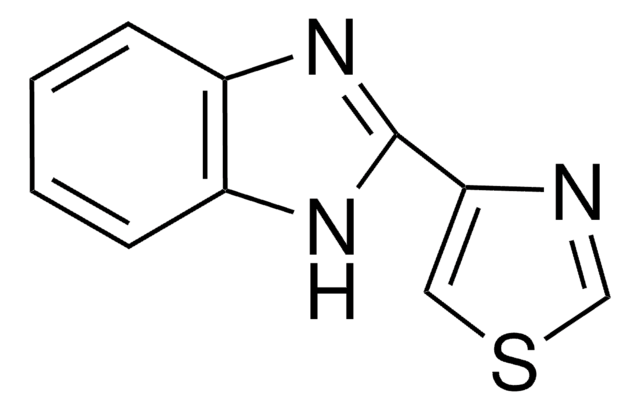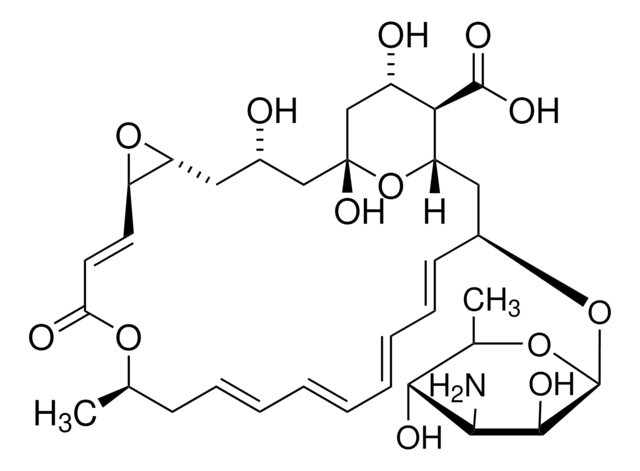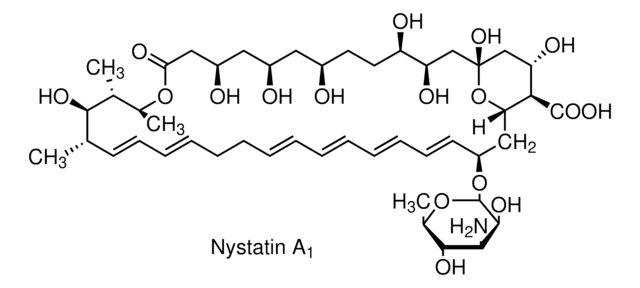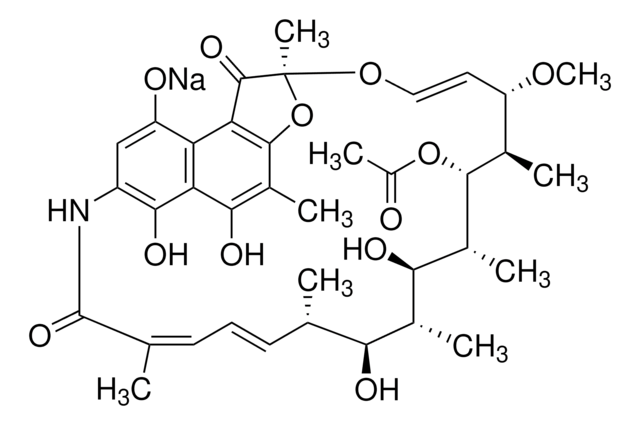P8556
Pentachloronitrobenzene
suitable for plant cell culture, BioReagent, ≥94% (GC), powder
Synonym(s):
PCNB, Quintozene
About This Item
Recommended Products
product line
BioReagent
Assay
≥94% (GC)
form
crystalline powder
powder
technique(s)
cell culture | plant: suitable
mp
140-143 °C (lit.)
solubility
toluene: 50 mg/mL, clear, faintly to slightly yellow
density
1.718 g/cm3 at 25 °C
antibiotic activity spectrum
fungi
application(s)
agriculture
Mode of action
DNA synthesis | interferes
SMILES string
[O-][N+](=O)c1c(Cl)c(Cl)c(Cl)c(Cl)c1Cl
InChI
1S/C6Cl5NO2/c7-1-2(8)4(10)6(12(13)14)5(11)3(1)9
InChI key
LKPLKUMXSAEKID-UHFFFAOYSA-N
Looking for similar products? Visit Product Comparison Guide
Application
Other Notes
Signal Word
Warning
Hazard Statements
Precautionary Statements
Hazard Classifications
Acute Tox. 4 Oral - Aquatic Acute 1 - Aquatic Chronic 1 - Skin Sens. 1
Storage Class Code
11 - Combustible Solids
WGK
WGK 2
Personal Protective Equipment
Certificates of Analysis (COA)
Search for Certificates of Analysis (COA) by entering the products Lot/Batch Number. Lot and Batch Numbers can be found on a product’s label following the words ‘Lot’ or ‘Batch’.
Already Own This Product?
Find documentation for the products that you have recently purchased in the Document Library.
Customers Also Viewed
Our team of scientists has experience in all areas of research including Life Science, Material Science, Chemical Synthesis, Chromatography, Analytical and many others.
Contact Technical Service














